The aircraft for today is a trainer aircraft that was initially built to be a single-engine and jet-powered advanced trainer for the British Air Force. The aircraft was produced initially by the company known as Hawker Siddeley back in the late 1960s and the first prototype of it flew back in 1974 at Dunsfold, Surrey. From 1977 onwards, the aircraft was produced by other manufactures named BAE Systems and British Aerospace.
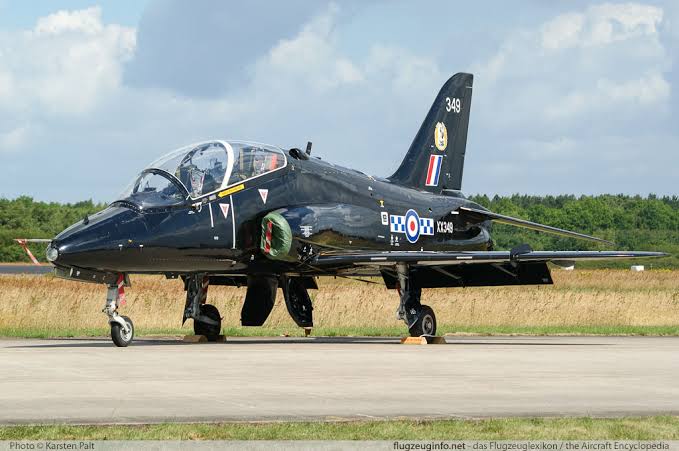
The BAE Systems Hawk is renowned to be a great trainer aircraft by many of the world air forces due to its low cost of combat. The primary operator for the BAE Systems Hawk is the Royal Air Force along with many other nations. It is still in the production line in the UK and also in India under a license where the company named HAL (Hindustan Aeronautics Limited) is manufacturing this trainer. All in all, there are nearly 900 of these BAE Systems Hawks have been created and sold to nearly 18 different nations.
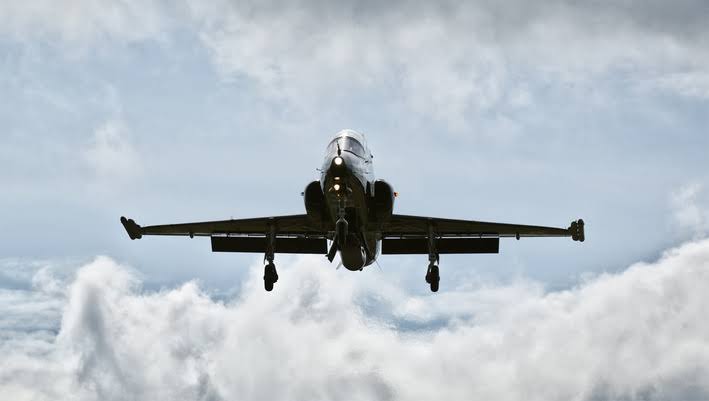
Origin & Development:-
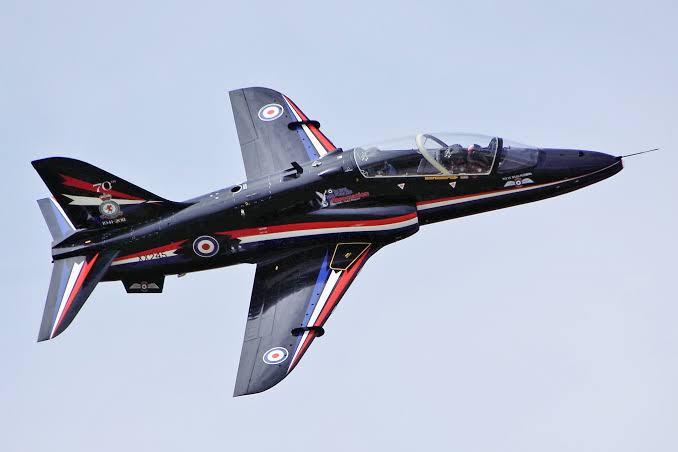
The origin of the BAE Systems Hawk started from back in 1964 when the RAF was in need of a new jet-powered trainer aircraft for its training purposes. The Hawker Siddeley, which had made a name for itself during World War II, took upon the responsibility for this RAF request in-house by utilizing its own funds to create a design. In 1969, Hawker Siddeley came up with a prototype design which they designated as P.1182 and later as HS.1182. After satisfying the RAF in 1971 with the initial design, the project was green-lighted for production in 1975. It was at that time, the aircraft was named as Hawk. The order at that time was for 175 of these BAE Systems Hawks.

The BAE Systems Hawk first prototype took it to the skies on 21st August 1974 and was then allowed for mass production under the designation Hawk T.Mk1. By the April of 1976, nearly 176 of these BAE Systems Hawks were provided to the RAF.
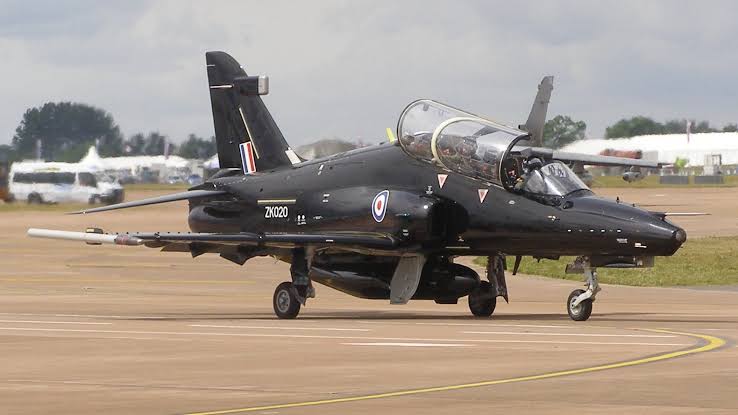
In 1977, the Hawker Siddeley went to change and become British Aerospace and with time, the British Aerospace was converted to BE Systems MAS Division back in 2007. With the change of name to the manufacturer, the aircraft was also named as BAE Systems Hawk.
Armaments:-
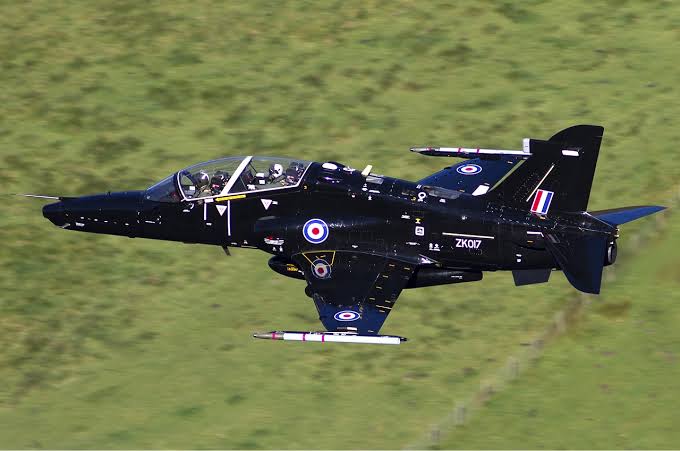
He standard armament configuration of the BAE Systems Hawk included a gun pod fitted on the centerline hardpoint under its fuselage section which had a total of 5 hardpoints. This gun pod was fitted with an ADEN series 30 mm cannon for the loose air support.
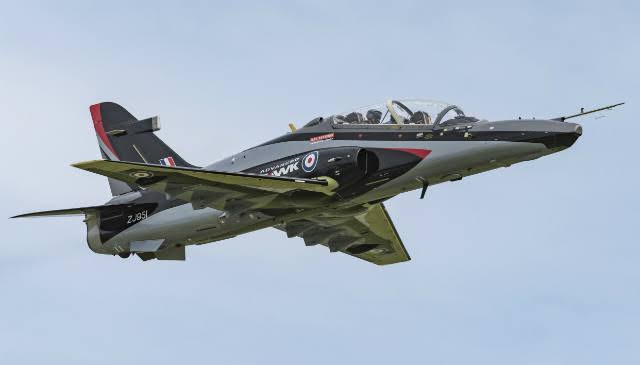
The BAE Systems Hawk also had two hardpoints under the wings for carrying external munitions like the rocket pods, conventional drop bombs, and guided missiles. As for the two of the innermost hardpoints, they were to have drop fuel tanks. The airframe of the BAE Systems Hawk allowed it to carry nearly 6800lbs of external munitions or fuel tanks.
Modified for the Air Defense purposes:-
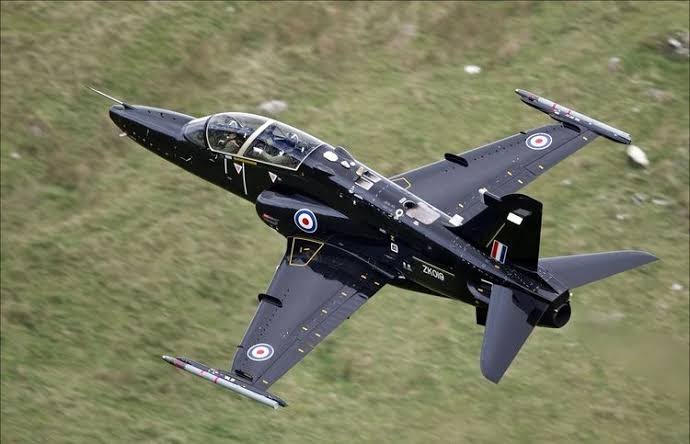
In the event of the threat of a war of Europe with the Soviet Union, RAF decided that it was time to upgrade the BAE Systems Hawk T.Mk.1 to an air defense aircraft. For this purpose, the BAE Systems Hawk was upgraded with support to carry the American made AIM-9L series air-to-air missiles for short-range confrontations. Early 89 of the BAE Systems Hawk models T.Mk.1 aircraft were modified to have this new armament configuration. This new model of BAE Systems Hawk which was designated as H.Mk.1A caught the eyes of the British Royal navy and procured 12 of these aircraft for the training of their personnel.
Popular variants of BAE Systems Hawk:-
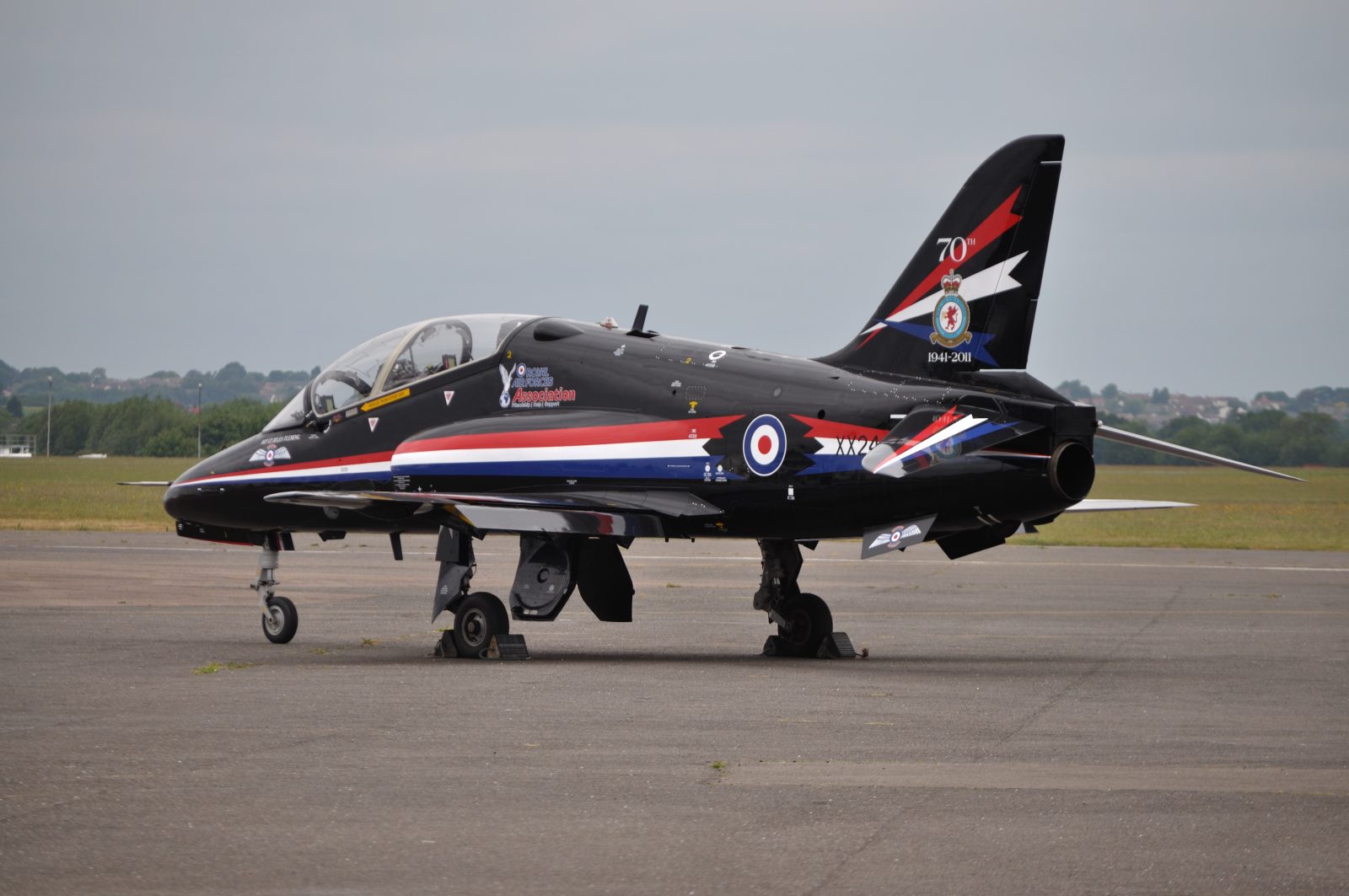
The first most serious variant of the BAE Systems Hawk was the Hawk 100 which would house features like the FLIR (Forward Looking Infrared Radar) along with a laser rangefinder fitted in the aircraft’s long nose assembly. For the controls, the aircraft had the HOTAS support and the avionics were upgraded with the introduction of the HUD and MFD.
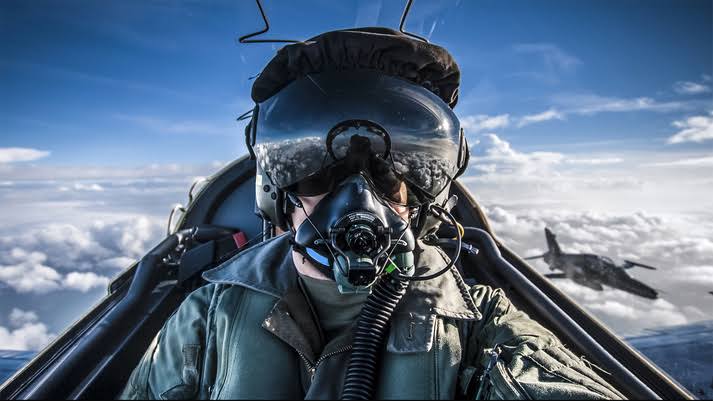
After that came the Hawk 120 LIFT aircraft which was a lead-in fighter trainer which had upgrades like the better cockpit displays and improvement in digital processing. The very first of this model was created by BAE Systems in the UK and delivered to the South African Ari Force with the remaining 23 being produced in South Africa under license by Denel.
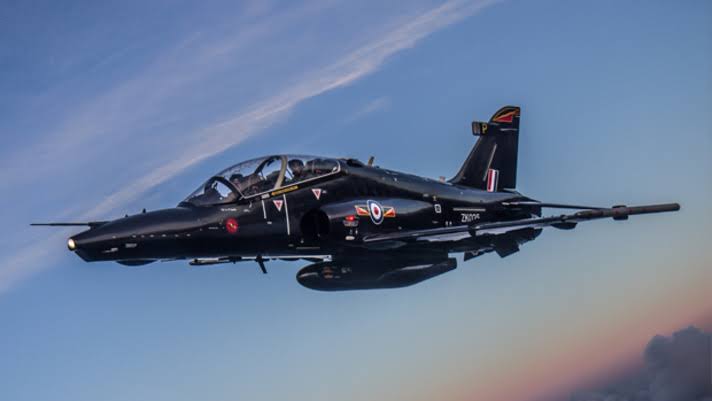
The most advanced and lethal version for the BAE Systems Hawk family is the Hawk 200 which unlike others was a single-seat trainer with intent to performed multiple light fighter roles. The fuselage design for this model was new as compared to previous variants along with wingtip missile support as well as the ability to perform aerial refueling. This allowed for the Hawk 200 to be a great aircraft for the aerial defense as well as for neutralizing the naval threats and air-to-air interceptions.
An offshoot of Hawk in US Navy:-
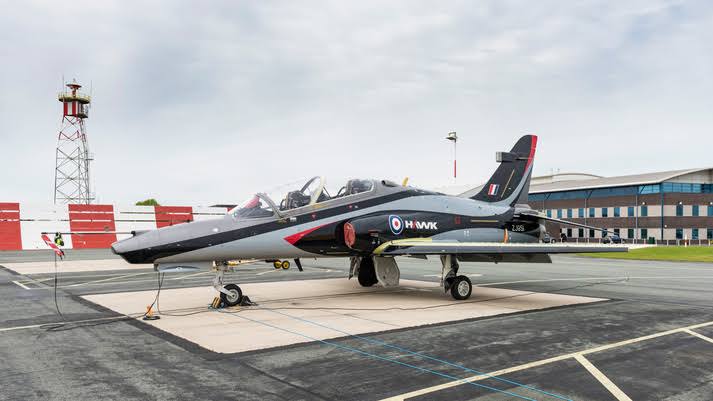
The US Navy has a trainer aircraft named T-45 Goshawk which is considered a plain offshoot version of the BAE Systems Hawk. The reason for this assumption is the design of T-45 to be in similarity with the BAE Systems Hawk but it still had many modifications to meet with the requirements of the US Navy.
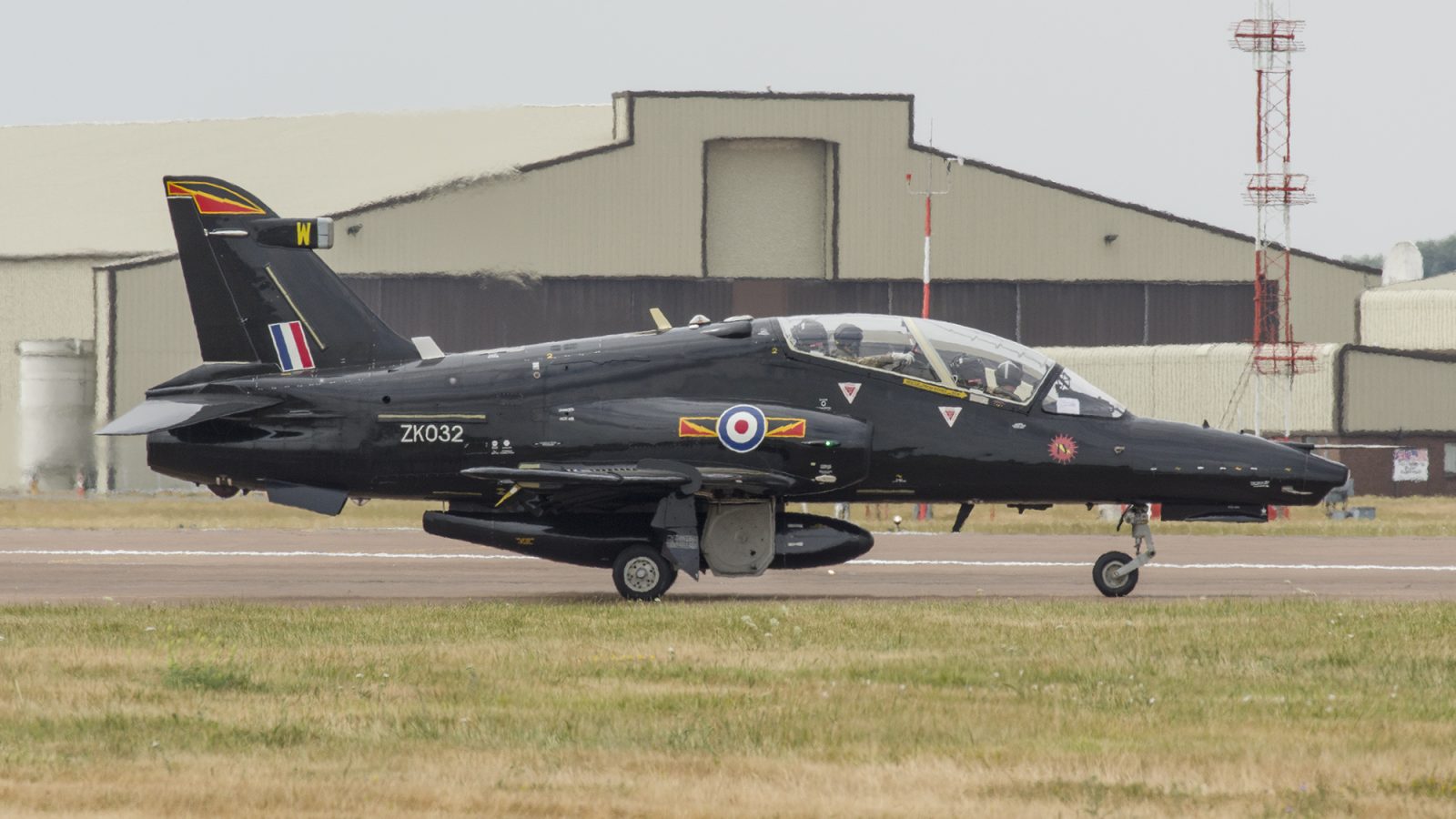
The reason for this similarity was because BAE Systems teamed up with McDonnell Douglas to create this aircraft. The aircraft was created back in 1975 with an order by the US Navy for 302 of these trainers in the face of the Cold War threat. However, after the Cold War ended, the order was limited to only 223 T-45 Goshawks.
Part of aerial acrobatics team “Red Arrows”:-
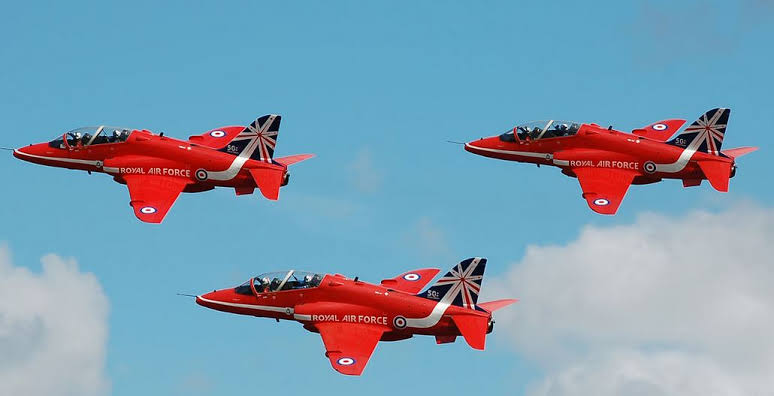
The BAE Systems Hawk was not only a military trainer but it also served its time as a part of the aerial acrobatics team. The performance of the BAE Systems Hawk inspired the British aerial acrobatics team by the name Red Arrows to include this nimble little aircraft in their fleet back in 1979.
Powerplant and other features:-

A single BAE Systems Hawk aircraft is powered by one Rolls Royce Adour Mk 951 turbofan engine which creates a thrust of 6500lbs. This allows the BAE Systems Hawk to fly at a top speed of nearly 639 mph for a range of 1566 miles. The operational ceiling limit for the BAE Systems Hawk is about 44505 feet which the aircraft achieves with a climbing rate of 9300 ft/min.
Related Content
Amazing facts about the Northrop F-20 Tigershark: The light Fighter that never saw combat action
Amazing facts about the AIDC F-CK-1 Ching-Kuo; The Taiwanese IDF (Indigenous Defense Fighter)
Interesting Facts about the CANT Z.506 Airone aka Heron; World War II Reconnaissance Aircraft

